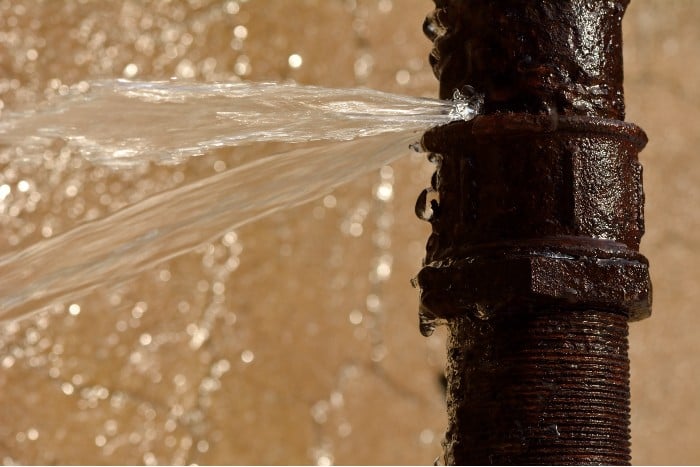Detailing the Six Most Common Causes of Home Water Leaks
Detailing the Six Most Common Causes of Home Water Leaks
Blog Article
We've noticed this article pertaining to How to detect water leaks in your home down the page on the web and decided it made sense to share it with you here.

Leakages not only create waste of water however can likewise cause unneeded damages to your home and promote unwanted natural growth. Sadly, water leakages may go unnoticed considering that a lot of the pipework in our home is concealed. By looking and also understanding for daily situations that trigger leakages, you can secure your residence from future leaks and unnecessary damages. Today, we will look at 6 leakage causes that may be creating your pipes to drip.
Trespassing origins
A lot of water leaks begin outside the house as opposed to inside it. If you notice an abrupt reduction in water stress, state in your faucet, take some time to head out as well as examine your lawn. You might observe damp patches or sinkholes in your backyard, and that could imply that tree origins are invading water lines creating water to seep out. You can have your plumber look for breach, especially if you have trees or hedges near your residential property.
Rusty water systems
As time goes by, your plumbing system ages and also corrosion such as rust may start eating away the pipelines. This could be the root cause of staining or warping on your water pipes. This requires an inspection with your plumber quickly. Think about replacing the pipelines given that they are at a higher risk of rust than the more recent designs if our plumbing system is old.
Defective Pipe Joints
Pipe joints can deteriorate over time, resulting in water leakages. If you have loud pipelines that make ticking or banging sounds, especially when the hot water is turned on, your pipe joints are probably under a whole lot of stress.
Instantaneous temperature level modifications.
Extreme temperature adjustments in our pipelines can trigger them to expand and get suddenly. This growth and tightening might trigger cracks in the pipes, specifically if the temperature level are below freezing. If you kept an eye on just how your plumbing functions, it would be best. The presence of the previously discussed conditions often shows a high threat.
Poor Water Connectors
At times, a leakage can be caused by loose hose pipes and pipes that supply your appliances. In case of a water connections leakage, you may observe water running directly from the supply line or puddles around your devices.
Clogged Drains
Blocked drains pipes might be aggravating and inconveniencing, however they can occasionally end up triggering an overflow leading to rupture pipelines. Maintain removing any type of products that might go down your drains that can obstruct them to avoid such troubles.
All the above are sources of leakages however not all water leaks arise from plumbing leakages; some leakages might come from roofing leakages. All leakages need to be repaired right away to stay clear of water damages.
Leakages not only cause waste of water but can likewise trigger unneeded damages to your residence and promote unwanted organic growth. By looking and also recognizing for day-to-day situations that cause leakages, you can shield your residence from future leakages and unnecessary damage. Today, we will look at 6 leakage causes that may be causing your pipes to drip.
At times, a leak can be created by loosened tubes and also pipelines that provide your devices. In instance of a water links leakage, you might observe water running directly from the supply line or puddles around your home appliances.
How To Check For Water Leak In Your Home
How To Check for Leaks
The average household's leaks can account for nearly 10,000 gallons of water wasted every year and ten percent of homes have leaks that waste 90 gallons or more per day. Common types of leaks found in the home are worn toilet flappers, dripping faucets, and other leaking valves. These types of leaks are often easy to fix, requiring only a few tools and hardware that can pay for themselves in water savings. Fixing easily corrected household water leaks can save homeowners about 10 percent on their water bills.
To check for leaks in your home, you first need to determine whether you're wasting water and then identify the source of the leak. Here are some tips for finding leaks:
Take a look at your water usage during a colder month, such as January or February. If a family of four exceeds 12,000 gallons per month, there are serious leaks.
Check your water meter before and after a two-hour period when no water is being used. If the meter changes at all, you probably have a leak.
Identify toilet leaks by placing a drop of food coloring in the toilet tank. If any color shows up in the bowl after 10 minutes, you have a leak. (Be sure to flush immediately after the experiment to avoid staining the tank.)
Examine faucet gaskets and pipe fittings for any water on the outside of the pipe to check for surface leaks.
Undetected water leaks can happen without the home or business owner even realizing. If you suspect a water leak, but not able to find the source. It is time to contact a professional water leak detection service, The Leak Doctor.
How To Find a Water Leak In Your Home
https://www.leakdoctor.com/blog/How-To-Check-For-Water-Leak-In-Your-Home_AE197.html

As a devoted person who reads on Most Common Causes of Leaky Pipes, I assumed sharing that short article was a good thing. For those who enjoyed reading our blog entry if you please make sure you remember to share it. We love reading our article about Common Water Leaks In House.
Call Today Report this page